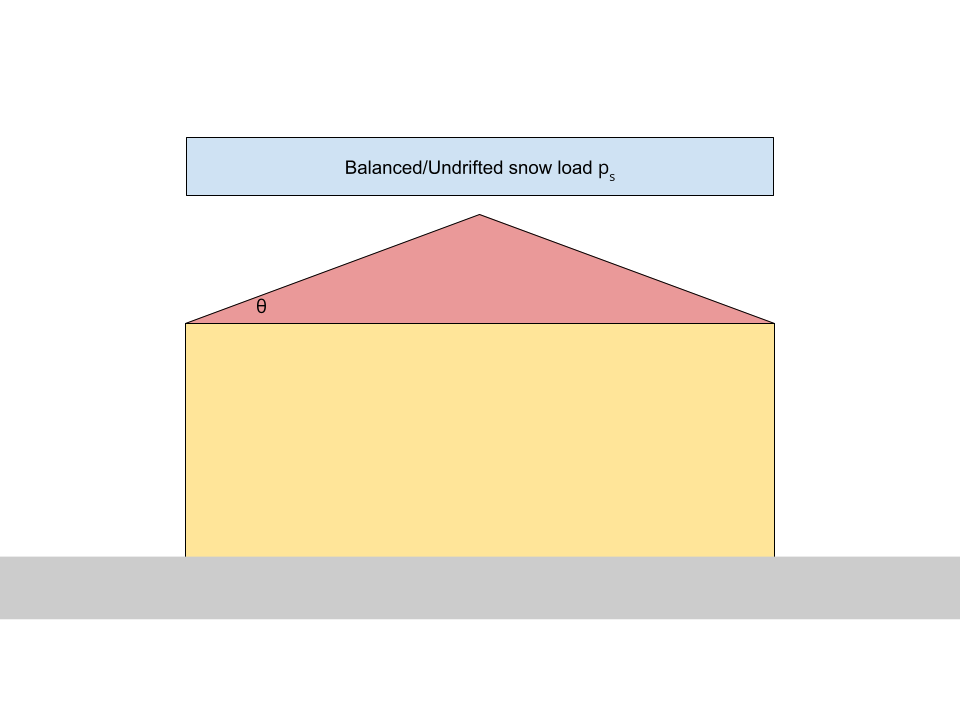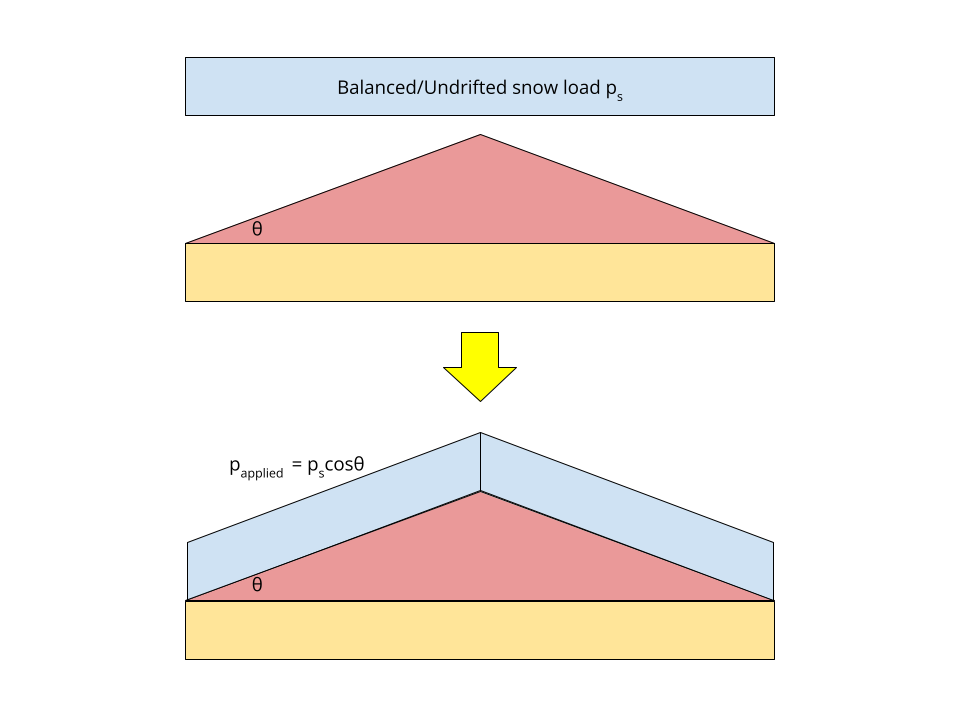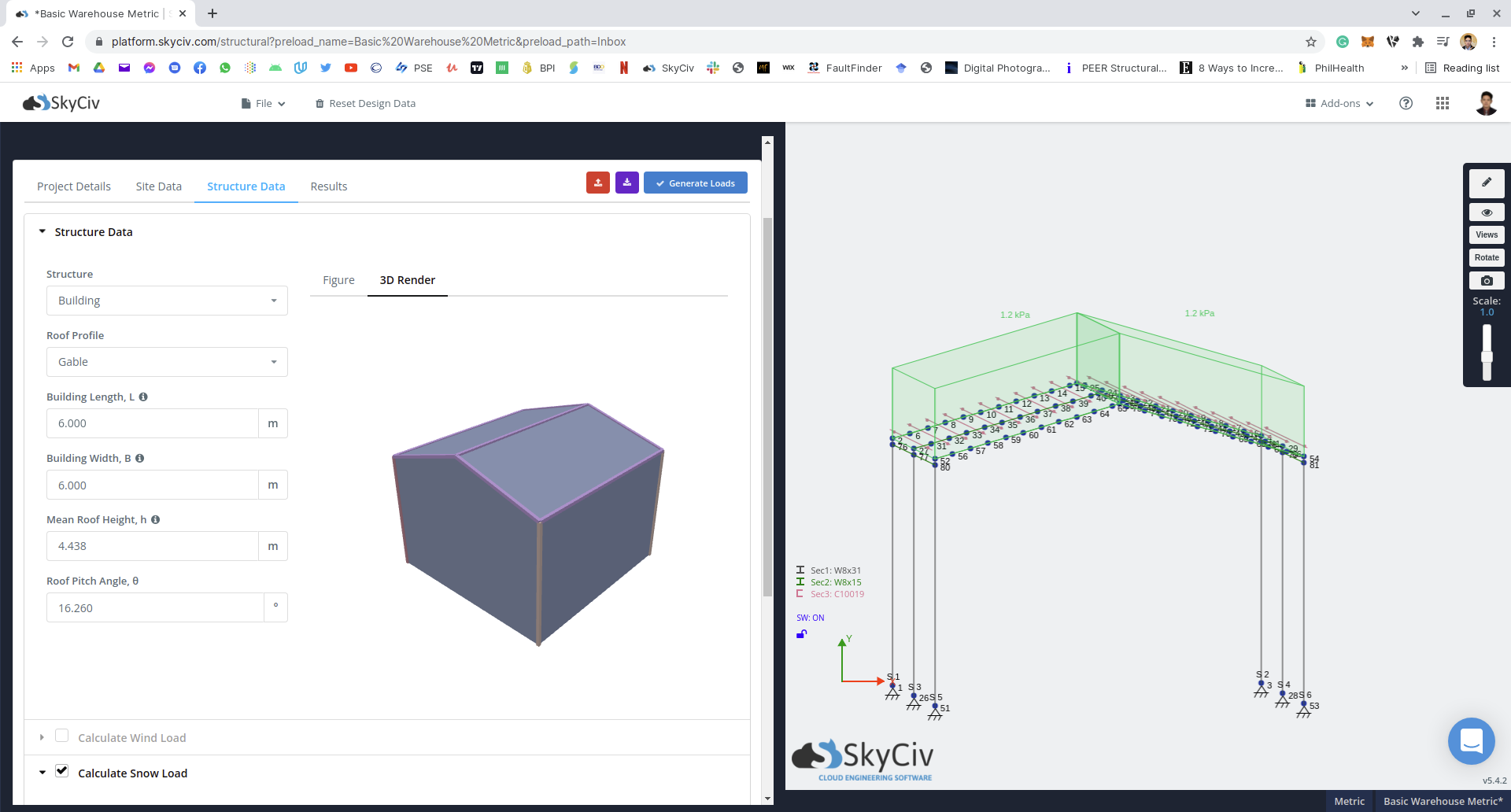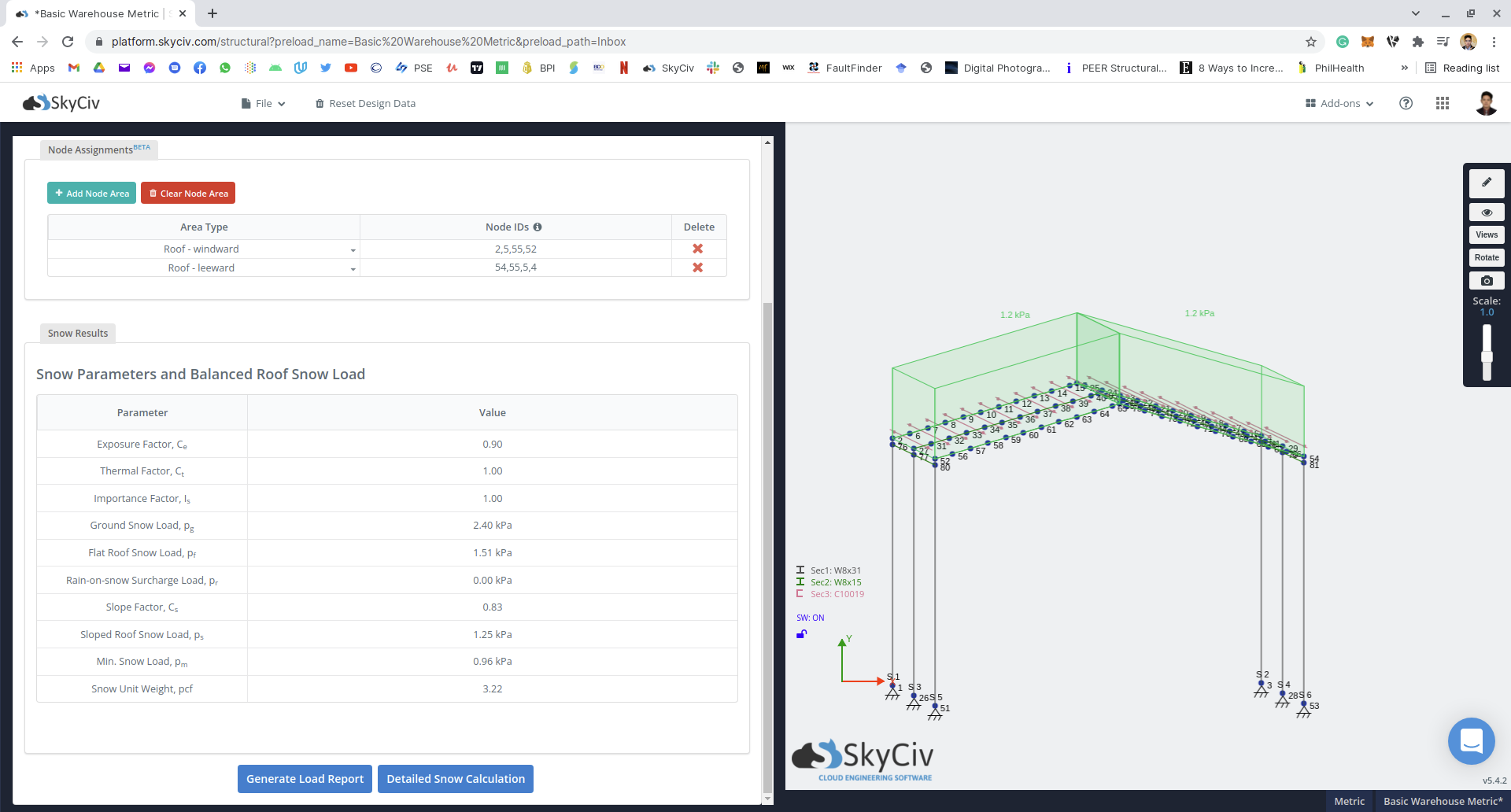Verwendung des in S3D integrierten Lastgenerators für Schneelasten
Bei der Berechnung von Schneelasten, Es wird immer davon ausgegangen, dass die ausgeglichene oder nicht abgetriebene Schneelast auf dem Dach auf die horizontale Projektion der Dachfläche aufgebracht wird, genauso wie Verkehrslasten aufgebracht werden. 
Um die Schneelast auf das Dach aufzubringen, Wir müssen Druck umwandeln \({p}_{s}\) durch Multiplikation mit dem Wert von cosθ. 
Verwenden des SkyCiv-Lastgenerators in S3D
Zum Professionelle Kontonutzer, Verwendung des in S3D integrierten Lastgenerators für Windlasten. Aus dem Modul, Erzeugen der ausgeglichenen/nicht abgetriebenen Schneelast \({p}_{s}\) wird automatisch angewendet, solange die Dach Luv- und Lee-Knoten sind die definiert Verwendung des in S3D integrierten Lastgenerators für Windlasten Verwendung des in S3D integrierten Lastgenerators für Windlasten.

Die Regel zum Definieren der Luv- und Lee-Knoten des Dachs ist unten dargestellt:


Deshalb, die entsprechende angesetzte Schneelast ist unten dargestellt:

Von diesem Modell, die ausgeglichene/unverwehte Schneelast \({p}_{s} = 1.25 kPa\) wird durch Multiplikation des Kosinuswerts von umgewandelt Dachneigungswinkel θ gleich 0.9603. Deshalb, die entsprechende Dachschneelast gleich ist \( p = 1.20kPa\). Verwendung von Freiflächenlast, es wird dann auf die Dachfläche des Modells aufgebracht. Für den unausgeglichenen/abdriftenden Fall, manuelle Eingabe erforderlich. Diese Funktion ist nur für ASCE verfügbar 7-10, ASCE 7-16, NBCC 2015, IM 1991, und AS / NZS 1170.
Statiker, Produktentwicklung
MS Bauingenieurwesen
Verweise:
- Amerikanische Gesellschaft der Bauingenieure. (2017, Juni). Minimale Auslegungslasten und zugehörige Kriterien für Gebäude und andere Strukturen. Amerikanische Gesellschaft der Bauingenieure.


